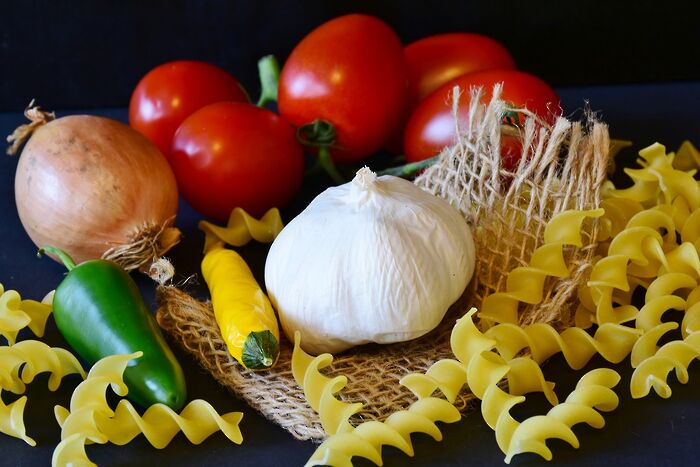A beginner’s guide to student cooking
Daunted by the prospect of cooking for yourself in Cambridge? Here are some simple steps to get you started

As Michaelmas term rolls in, many of us are confronted with a problem common to all or most university students – how to make food for ourselves. Now, some of us are content to become regulars of the college halls, and that is a totally viable option. However, there will come a time when you are sick of college hall food or when you begin to crave some home food. For international students, you might end up in a situation where the only way to get a dish (like say sambal prawns and tempeh) is to make it yourself. While not all of this guide will be applicable to every aspect of your cooking experience, I do hope the advice and the recipes may prove helpful to conquer the gyp situation and helping you make edible (and delicious) food.
The first thing to check is whether you have sufficient cooking equipment. Gyps vary wildly across and within colleges. Sometimes you may luck out and find yourself not only with a hob in your kitchen, but even an oven. This enables some interesting pasta bakes for the intrepid (or particularly pasta-bake-loving). With a hob, you can acquire a saucepan or a pot (or perhaps borrow from a friend if you are more of an irregular cook) and set about with the various stir-fries, grilled or fried meats or vegetables, and so forth.
I recommend that you acquire some pantry staples for preparing simple and filling meals
If you reside in colleges where gyps merely have a microwave, then there are two semi-desperate solutions available to you. The first is to become familiar with microwave recipes (Google and Youtube are helpful) and microwave-safe bowls (ceramic is good, certain types of plastic risky, everything else is not safe). The second is to invest in your own cooking equipment. I have been successful in using a rice cooker to make grilled fish and fry eggs. Meanwhile, a slow-cooker is great for stews, soups, and curries, and is equipment you can leave alone for a bit while you do other things.
Next are ingredients. The supermarket you'll visit will depend on where you live, but for those interested in Asian cuisine, you can’t go wrong with the supermarkets on Mill Road, which hosts various other specialty stores catering to ethnic groups and vegans, and the JiaMart shop on Regent Street. To cook these, I recommend that you purchase some pantry staples. Pantry staple lists vary and can be adapted to fit your needs. My pantry generally has:
- Basic condiments. These range from salt, pepper, some curry powders, and sugar.
- Chicken or vegetable stock powders (a really good addition to soups), along with soya sauce and fish sauce (non-essential but really good for stir fries and grilled fish).
Other helpful items include:
- Aromatics (garlic and onions), various herbs (you can tailor the exact mix, but if you like bolognese then go with the basil, oregano, bay leaf combination).
- Sources of carbohydrates (dry pasta keeps better, but you can get away with microwaving fresh pasta if the microwave is your only option; rice is good if you can make it, otherwise couscous, instant rice, or other grains work well too).
What do you wish you’d known as a fresher?
Write for Varsity and tell us what advice you’d give to someone starting your course. Just email our Lifestyle team with a 100-word pitch.
If it daunts you to select your own vegetables and meats, some helpful tips include to avoid overly soft fruits or wilted browned vegetables, to pick fish that has no strong fishy scent, and meat that is in brighter shades of red and not the brownish-red colour of oxidised blood. When in doubt, Google is your best friend. Moreover, consider that you are most likely to be sharing a gyp fridge with others. Remember to keep track of all the food you have stored away. This will prevent unfortunate incidents like when I left a fish stir-fry in a container behind a housemate's groceries. Unboxing week-old fish stir-fry was a singularly unpleasant experience that I do not want you to experience.
Lighter meals can be made more filling by adding rice or pasta
As for basic doable recipes, good examples include pastas, curries, and salads. For pastas, you can boil the pasta in salty water or place the fresh pasta in a container in the microwave in hot salty water and microwave until done (the latter method used in desperation works best with smaller pastas like raviolis). Using store-bought sauces is a good shortcut, and you can customise the sauce with additions like sausage or mushrooms. To do this, either cook them in the saucepan with the sauce or heat them up with the sauce in the microwave and add to the pasta later.
As for curries, you can try to thinly slice potatoes, drizzle some oil and salt and precook in the microwave for about 3 minutes. Then add the curry sauce and other ingredients (like chicken or aubergines) and microwave for about 5-7 minutes. Check on it frequently and microwave longer if necessary. Salads are even simpler. For a lighter meal, combine washed lettuce, sliced tomatoes or bell peppers, pesto sauce and canned cooked mackerel fish. To bulk this up, you may add rice or pasta.
This is but a small fraction of cooking advice, but I hope that it provides a starting point for your culinary adventures. Good luck, and may homemade food comfort to you through the stresses of the weeks ahead.
 News / Eight Cambridge researchers awarded €17m in ERC research grants27 December 2025
News / Eight Cambridge researchers awarded €17m in ERC research grants27 December 2025 News / Downing investigates ‘mysterious’ underground burial vault 29 December 2025
News / Downing investigates ‘mysterious’ underground burial vault 29 December 2025 Lifestyle / Ask Auntie Alice29 December 2025
Lifestyle / Ask Auntie Alice29 December 2025 Sport / Hard work, heartbreak and hope: international gymnast Maddie Marshall’s journey 29 December 2025
Sport / Hard work, heartbreak and hope: international gymnast Maddie Marshall’s journey 29 December 2025 Science / Astronomical events to look out for over the break29 December 2025
Science / Astronomical events to look out for over the break29 December 2025










